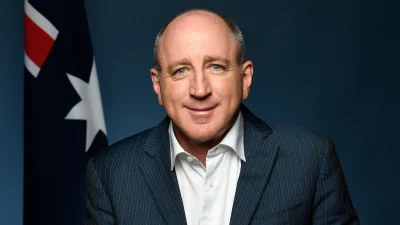Wraps and master trusts – Jury is out as wrap developers take the super approach
Wrap account developers have hailed the recent introduction of superannuation into the wrap structure as a major breakthrough. Samantha Walker takes a look at the financial planning community's response to the development.
Superannuation has long been a thorn in the side for suppliers of wrap accounts.
Until recently, it has been difficult to design a superannuation component to comply with regulations.
However, according to head of BT Portfolio Services, Ron Scott, this is now no longer the case. In February, the group unveiled SuperWrap, which it claims is a wrap account that includes superannuation as part of its overall service but within a master trust structure.
However, many financial planners are yet to be convinced that wrap accounts are the most efficient way to deal with superannuation clients.
Many planners are approaching wrap accounts with some trepidation, and are reluctant to change their businesses to offer wrap services. And some are waiting until the services evolve further and there is more competition in the marketplace.
However, Scott argues SuperWrap is a breakthrough for planners wishing to tap into the future potential of superannuation clients under a choice of fund environment.
"The facility enables advisers to combine their clients entire super and non-super investment portfolio into one administrative facility," he says. "It helps people save for retirement in a convenient and tax effective way."
But Accent Investment Services chief executive officer Corinna Dieters remains sceptical about the services wraps can provide clients. She says planners need to know a lot more about wrap accounts before they commit their businesses to them.
"I think wrap accounts in the marketplace at the moment need a little more definition," she says. "There is a view that wrap accounts are just master trusts with the administration add-on."
Dieters believes wrap accounts may not meet the needs of superannuation investors, many of whom do not want what they see as complicated approaches to their retirement savings.
"Consumers don't treat superannuation in the way that wrap account manufacturers believe they do," she argues. "For most people, when it comes to superannuation, they want something simple, portable and flexible."
Dieters also questions whether wrap manufacturers will want to target most superannuation clients, saying that wrap accounts would only be feasible to the high net worth end of the market. She argues, however, that this is also the case with most master trusts.
Clients and planners alike are not yet comfortable with wrap services, she says, and many are yet to decide on the relative merits of "the bells and whistles" attached to the product. Until proven otherwise, she is happy to have her superannuation clients remain in a master trust.
Investor Security Group's managing director Robert Keavney, no stranger to the ongoing debate on wrap services, takes a slightly different view, describing wraps as a step in the right direction. Keavney applauds manufacturers' attempts to bring superannuation within the one reporting structure.
"The big problem with wraps is that you can't strictly speaking include super though I think offering super under a master trust structure within a wrap account is certainly better than not being able to handle the super side at all," he says.
The solution to the problem, he says, is to incorporate wraps into a broader system within a planning practice.
"What is needed is complete front end software which can provide reporting on all assets," he argues.
Unlike Dieters, Keavney feels wrap accounts can offer more than a traditional master trust. He argues, for example, that master trusts cannot cope with the inclusion of immediate annuities that offer the most competitive rates to clients' funds and says that "wraps are more inclusive than a master trust", although he stresses they are only part of an overall solution.
Scott concedes that laws governing superannuation products restrict the options for manufacturers wishing to include super within a wrap service. Superannuation legislation requires that all superannuation monies be invested under a trustee structure. Because wrap services are offered under a custodian structure, wrap manufacturers are only able to offer superannuation products within a master trust, which is then included within the wrap service. This is the approach that BT Portfolio Services has had to adopt in formulating SuperWrap.
Scott argues, though, that SuperWrap is the answer to both financial planners' and investors' needs.
"This is the equal, if not superior, to existing super products," he says.
Brady & Associates managing director Paul Brady is taking a wait and see approach to wrap accounts.
He argues "there needs to be a little more water under the bridge", before planners make up their mind about the benefits of wraps for all clients, let alone clients investing solely in superannuation.
Brady sees the choice of fund environment as conducive to a planner's practice, with planners gaining access to clients' funds at an earlier, more crucial stage.
However, he argues the timeline and practical issues relating to the transition of a planning practice to offering wrap services is given "nowhere near absolute attention."
"There is a preference for many financial planners not to be guinea pigs in the process," Brady says, adding that many planners' scepticism of wrap accounts are due to the suppliers' push in the early stages of the product.
Brady subsequently would not be drawn on whether or not he felt that superannuation clients would be better off within a wrap account structure.
In the face of such trepidation, however, Ron Scott remains optimistic. He says financial planners are slowly becoming more comfortable with wraps, citing a "continual educational process" he says is occurring within the industry.
"Wrap is a financial tool that is always evolving, incorporating new technology, offering greater choice and providing more services," he says. "Advisers can already use the wrap for DIY investments. With the latest addition of personal super and allocated pensions, wrap caters for clients investment needs at all stages of their financial life span."
Recommended for you
Unveiling its performance for the calendar year 2024, AMP has noted a “careful” investment in bitcoin futures proved beneficial for its superannuation members.
SuperRatings has shared the median estimated return for balanced superannuation funds for the calendar year 2024, finding the year achieved “strong and consistent positive” returns.
The second tranche of DBFO reforms has received strong support from superannuation funds and insurers, with a new class of advisers aimed to support Australians with their retirement planning.
The financial services technology firm has officially launched its digital advice and education solution for superannuation funds and other industry players.














